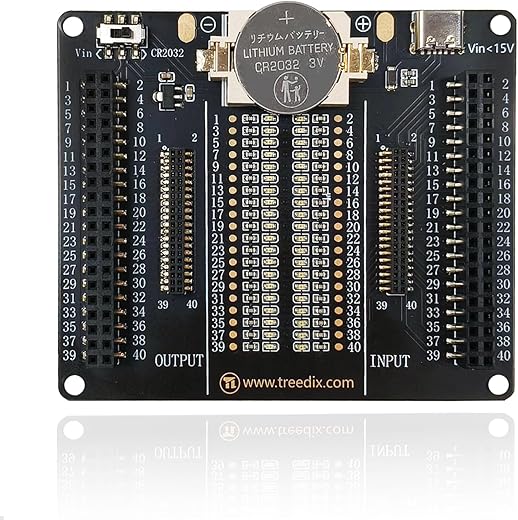







Understanding Detection Indicators: A Comprehensive Guide
In a world where information is constantly exchanged, the ability to detect and interpret various signals is essential. Whether you’re monitoring network security, analyzing market trends, or simply trying to stay ahead in your personal life, detection indicators serve as your radar, alerting you to what’s coming next. So, what exactly are detection indicators, and why should you care? Let’s unpack this concept together.
What Are Detection Indicators?
Detection indicators are signals or metrics that help identify specific activities or events. Think of them as the warning lights on your dashboard. Just as a blinking oil light prompts you to check your vehicle, these indicators can alert you to potential issues or opportunities in various contexts—be it cybersecurity, business analytics, or even personal finance.
In essence, detection indicators help you navigate through complex data and make informed decisions. They can range from quantitative metrics, like sales figures, to qualitative insights, such as customer feedback. Each type serves its unique purpose, providing a multifaceted view of your environment.
Types of Detection Indicators
Detection indicators can be categorized into several types, each with its unique applications. Let’s explore some of the most common types:
1. Quantitative Indicators
These are measurable metrics that provide numerical data. For instance, in a business context, sales growth percentage or website traffic can serve as quantitative indicators. They help you gauge performance over time and make data-driven decisions. Imagine trying to navigate a ship without a compass; numerical indicators act as your navigational tools in the tumultuous sea of data.
2. Qualitative Indicators
Unlike their quantitative counterparts, qualitative indicators focus on non-numeric data. This might include customer reviews, employee feedback, or social media sentiment. These indicators provide context and depth, helping you understand the “why” behind the numbers. They’re like the rich, flavorful spices that enhance a dish—without them, your data would be bland and uninviting.
3. Leading vs. Lagging Indicators
Leading indicators are predictive in nature. They forecast future performance based on current trends. For example, an increase in job postings could indicate economic growth on the horizon. Conversely, lagging indicators reflect past performance. A classic example is revenue from last quarter, which tells you how well your strategies have worked but doesn’t help you predict future success.
Understanding the difference between leading and lagging indicators is crucial. It’s like knowing when to plant seeds for a future harvest versus when to evaluate the crops you’ve already grown.
Why Are Detection Indicators Important?
The significance of detection indicators cannot be overstated. They provide invaluable insights that enable you to:
– **Make Informed Decisions**: With the right indicators, you can identify trends, assess risks, and capitalize on opportunities.
– **Enhance Performance**: By continuously monitoring key metrics, you can fine-tune your strategies and improve overall performance.
– **Stay Competitive**: In today’s fast-paced world, being proactive rather than reactive is vital. Detection indicators allow you to stay ahead of the curve.
How to Effectively Use Detection Indicators
Using detection indicators effectively requires a strategy. Here’s a simple guide to get you started:
1. Define Your Objectives
Before you can utilize detection indicators, you must clearly outline your goals. Are you looking to boost sales? Enhance customer satisfaction? Understanding your objectives will help you select the most relevant indicators.
2. Choose the Right Indicators
Once your objectives are set, it’s time to select the appropriate indicators. Consider both qualitative and quantitative metrics. A well-rounded approach will give you a comprehensive understanding of your situation.
3. Monitor Regularly
Detection indicators are not a one-time affair. Regular monitoring is essential to stay on top of changes and adapt your strategy accordingly. Think of it as maintaining a garden; regular attention helps you identify problems before they blossom into larger issues.
4. Analyze and Adjust
Data without analysis is like a ship without a sail; it won’t get you far. Regularly analyze your indicators and be prepared to adjust your approach. Flexibility is key.
Conclusion
Detection indicators are indispensable tools in today’s data-driven world. By understanding their types, significance, and effective use, you can navigate the complexities of various domains with confidence. Whether you’re a business leader, a marketer, or simply someone looking to make better decisions in life, mastering detection indicators is the way to go.
So, as you set sail on your journey of data exploration, remember: the right indicators can illuminate your path and guide you toward success.
FAQs
1. What is the difference between quantitative and qualitative indicators?
Quantitative indicators are measurable and represented in numerical form, while qualitative indicators focus on non-numeric data, providing context and insights into the “why” behind the numbers.
2. Why are leading indicators more valuable than lagging indicators?
Leading indicators are predictive and can forecast future performance, allowing you to be proactive. In contrast, lagging indicators reflect past performance and are less useful for future planning.
3. How often should I monitor my detection indicators?
Regular monitoring is essential; depending on your objectives, it may be daily, weekly, or monthly. The key is to stay vigilant and ready to adapt your strategies based on the insights you gain.
